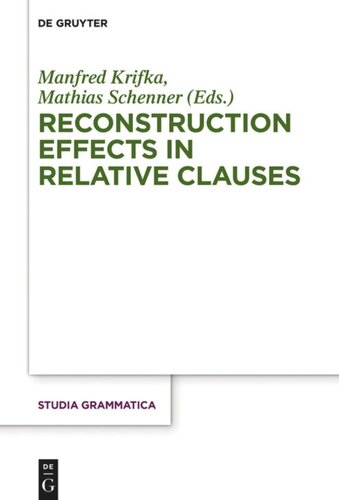

Most ebook files are in PDF format, so you can easily read them using various software such as Foxit Reader or directly on the Google Chrome browser.
Some ebook files are released by publishers in other formats such as .awz, .mobi, .epub, .fb2, etc. You may need to install specific software to read these formats on mobile/PC, such as Calibre.
Please read the tutorial at this link: https://ebookbell.com/faq
We offer FREE conversion to the popular formats you request; however, this may take some time. Therefore, right after payment, please email us, and we will try to provide the service as quickly as possible.
For some exceptional file formats or broken links (if any), please refrain from opening any disputes. Instead, email us first, and we will try to assist within a maximum of 6 hours.
EbookBell Team

4.1
100 reviewsReconstruction effects in relative clauses are a class of phenomena where the external head of the relative clause seems to behave as if it occupied a position within the relative clause, as far as some commonly accepted principle of grammar is concerned.
An often cited type of example is “The [relative of his] [which every man admires most] is his mother.”, where the pronoun “his” in the relative head appears to be bound by the quantified noun phrase “every man” in the relative clause – although the latter does not c-command the former, which is commonly required for binding.
Several solutions have been developed in various theoretical frameworks. One interesting aspect about reconstruction effects in relative clauses is that they can be used as a benchmark for competing theories of grammar: Which architecture of the syntax-semantics interface can provide the most satisfying explanation for these phenomena? This volume brings together researchers working in different frameworks but looking at the same set of empirical facts, enabling the reader to develop their own perspective on the perfect tradeoff between syntax and semantics in a theory of grammar.